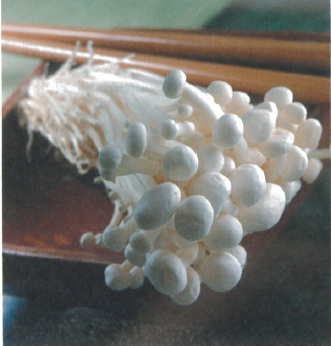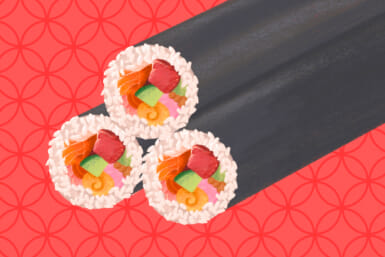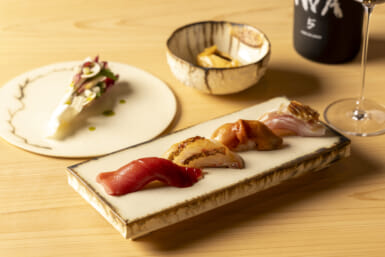Getting your chopsticks around
by Melissa Feineman
Have you ever walked around a Japanese supermarket and felt simply overwhelmed by the variety of products available? When I first came to Japan, one of my favorite games involved walking around the supermarket and wondering what mysteries were lurking behind all those brightly packaged exteriors.
I’m lucky to have my good friend Makiko and her grandmother to explain the essentials of Japanese cooking and ingredients to me. “Sa, shi, su, se, so” is a useful way to remember the five fundamental flavors used in Japanese cooking. Sa stands for sato, or sugar; shi is shio or salt; su is vinegar; se is shoyu (otherwise known as soy sauce); and so is miso. Most Japanese meals simply involve striking the right balance between these flavors.
There are many advantages to cooking in Japan. It’s no secret that Japanese home cooking is healthy. Many believe it contributes to the long life that most Japanese enjoy. And if health and taste aren’t enough to persuade you, what about the fact that it’s simply the cheapest way of eating while you’re here in Japan? If you’re still feeling a bit hesitant, here is a rough guide to some ingredients and how to use them.
Miso: fermented soybean paste. White, or shim miso, is sweet and often used to flavor soups, while red, or aka miso has a saltier flavor. Awase miso is a combination of the two.
Mirin is used to sweeten and increase the fragrance of simmered dishes.
Shoyu: Soy sauce comes in two basic varieties: usukuchi is saltier and used for flavoring raw tofu, while the sweeter koikuchi is used when cooking.
Tofu: Yakidofu is grilled, giving it a crisp texture on its outer layer. Age is the deep-fried delight that is a great addition to miso soup. Momen tofu is semi-firm and great for stirfries and tofu hamburgers. Kinugoshi or silken tofu can be blended to create creamy, dreamy, low-fat salad dressings and mousses.
Dashi: A salty fish-based broth that is an essential ingredient in most dishes, especially miso soup.
Here are some recipes to get you started:
Miso Eggplant
This sweet dish is a snap to prepare.
1 medium-sized eggplant, cut into bite-sized cubes, 2 medium bell peppers, 2 tablespoons awase miso, 2 tablespoons mirin, 1 1/2 tablespoons sugar, sesame oil, sesame seeds.
Heat oil in a pan, add the eggplant and peppers, cook until soft. Make the sauce by dissolving miso in the mirin, then stir in sugar. Add to eggplant and pepper, top with sesame seeds and serve immediately.
Dressed Gobo with Carrot (Kinpira)
This spicy little number makes a great side dish.
1 medium-sized stick of gobo, 1 medium carrot (cut julienne), 1-2 teaspoons togarashi (spicy red pepper), 2 teaspoons sugar, 1/4 cup of koikuchi shoyu, sesame oil, sesame seeds.
Remove the outer layer of the gobo, use a peeler to slice thinly, and soak in a bowl of water for a few minutes. Rinse and drain. Heat oil, then add gobo and carrot. Cook until just soft. To make the sauce, stir together koikuchi shoyu, togarashi, and sugar. Add a pinch of sesame seeds. Pour onto gobo and carrot mixture. Chill for at least two hours.
Thank you to Makiko Dei and Toshiko Takahashi for their assistance in writing this article. /em









